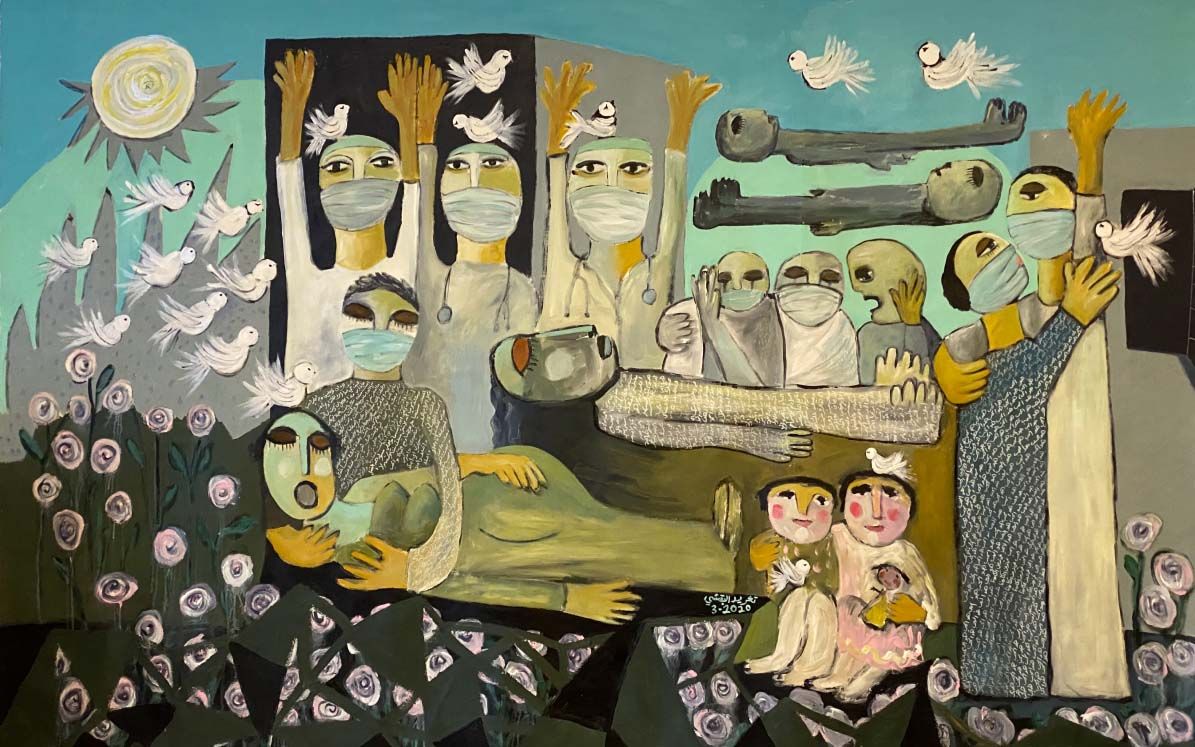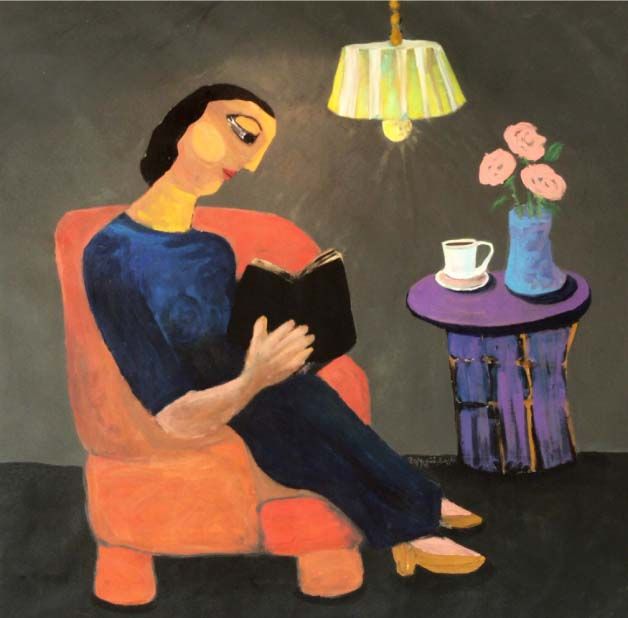A poem from Al Muallaqat
Calligraphic Kufic reinterpretation of poem by Saudi artist Hind Al Ghamdi.
6th century Arabian poet Tarafa.
Interpretation: How new ideas and new stories can come to you from the most unlikely or unexpected of places. Tarafa, (full name Ṭarafah ibn al-‘Abd ibn Sufyān ibn Sa‘d Abū ‘Amr al-Bakrī al-Wā’ilī), a pleasure-seeking youth, is one of the poets of the famous Al Muallaqat, the golden suspended seven odes (or hanging poems). It is said that some time in the 8th century, a wise man called Hammad Al Rawiya (“The Transmitter” or “Rhapsodist”) took it upon himself to collect the “best of the best” of Arabic poetry.
His mission was the preservation of the Arabic art form, after noticing a declining interest from the public. He titled the collection he assembled Al Muallaqat. Written by seven poets, it remains one of the Arab world’s most-cherished literary treasures. The compilation was so revered, it is believed the poems were reproduced on curtains with golden threads and hung on the Kaaba in Mecca.
From unforgettable descriptions of sand dunes, to the deserted camps of lost loves, rising camels, rampaging steeds, and antelopes gazing at you with charming, kohl-coloured eyes, there is something for everyone in Al Muallaqat’s seductive metaphors and elegant eloquent diction.
Several of the themes in these classical texts are timeless and still remain relevant today– love, views on the other, travel and wanderlust, tradition and nonconformity, exile and nostalgia.
Comprising around 571 abyat (lines), the Muallaqat were composed by accomplished authors of the pre-Islamic era, including: Imru’ Al Qays, the wandering king; Tarafa; Zuhayr, a moralist; Antara, a black knight and Heathcliff-like romantic hero; the centenarian Labid; grief-stricken knight Amr ibn Kulthum, a regicide who laments over loss and grief; and Al Harith Ibn Hillizah, a leper who offers a tribal commentary.
R.T.G


